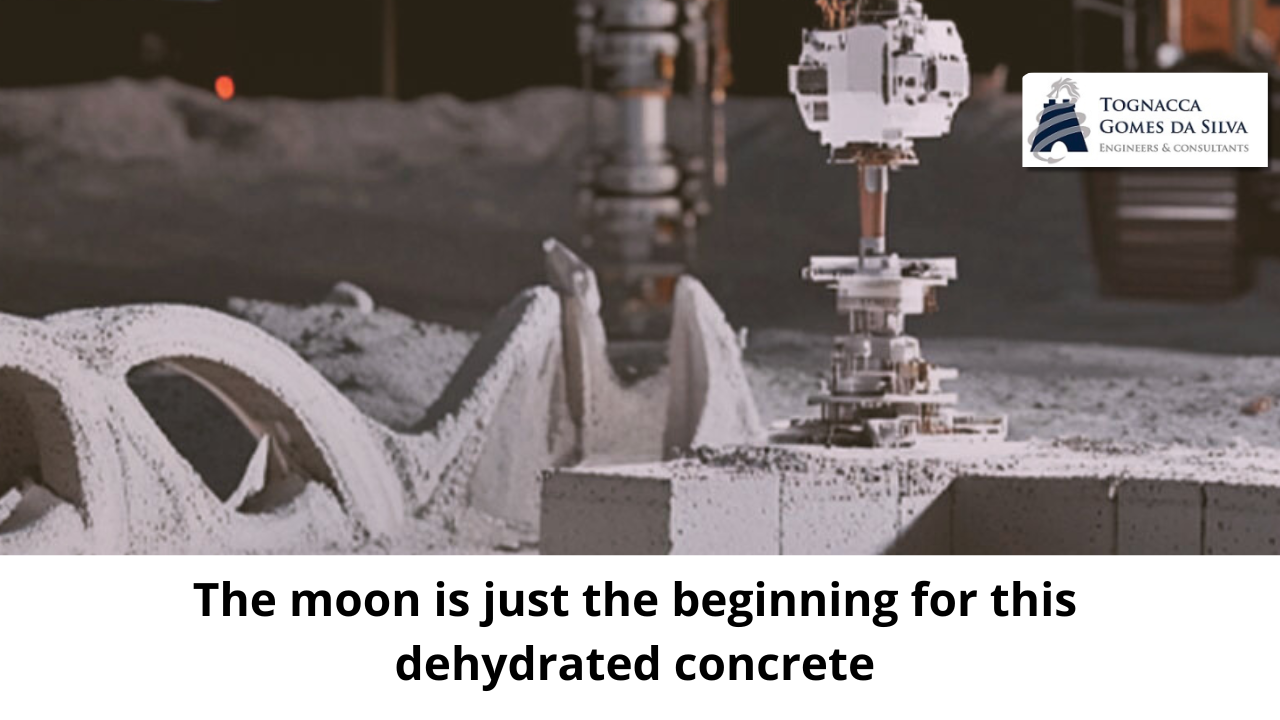If NASA establishes a permanent presence on the Moon, astronaut homes could be made from new 3D-printable, dewatered concrete. The other news is that, one day, your home on Earth could also be made from this product: by speeding up the construction process, this sulfur-based compound could become as applicable in our home terrain as it is in lunar soil.
Artemis III – scheduled to launch in September 2026 – will not only mark humanity’s return to the Moon after more than 50 years. It will also be the first mission to explore the lunar south pole, the proposed site of NASA’s base camp.
Building a base on the Moon will require a large supply of lunar infrastructure: launch pads, shelters and radiation blockers. But transporting concrete from Earth to the lunar surface comes at a high price. According to Ali Kazemian, a robotics construction researcher at Louisiana State University (LSU), sending just 1 kg of material to the Moon costs about US$1.2 million. Instead, NASA hopes to create materials from lunar soil and eventually adapt the same techniques for construction on Mars.
Traditional concrete requires large amounts of water, a commodity that will be scarce on the Moon and extremely important for supporting life or scientific research, according to the American Society of Civil Engineers. While previous NASA projects have tested compounds that could be used to make “lunar concrete,” they are still working to create the suitable material without water.
So LSU researchers are refining the formula, developing a new sulfur-based cement, which they heat until it melts to bond the material together without the need for water. In recent work, the team mixed their waterless cement with simulated lunar and Martian soil to create 3D-printable concrete, which was used to assemble walls and beams. “We need automated construction, and NASA believes that 3D printing is one of the few viable technologies for building lunar infrastructure,” reinforces Kazemian.
In addition to bypassing the need for water, cement can withstand wider temperature extremes and dry more quickly than traditional methods. The group used a pre-made powder for their experiments, but on the Moon and Mars, astronauts can extract sulfur from surface soil.
To test whether concrete can withstand the moon’s harsh environment, the team placed their structures in a vacuum chamber for weeks, analyzing the material’s stability at different temperatures. Initially, researchers feared that the cold conditions on the dark side of the Moon could cause the compound to turn into a gas through a process called sublimation, as occurs when dry ice skips its liquid phase and evaporates directly. However, they discovered that concrete can, in fact, withstand the icy environment of the lunar south pole without losing its shape.
Some conditions, such as reduced gravity, could even work in concrete’s favor. The experiment tested structures such as walls and small circular towers, each made by stacking several layers of concrete. “One of the main challenges of large-scale 3D printing is the distortion of these thick and heavy layers”, points out Kazemian. “But when gravity is lower, this can help prevent the layers from deforming.”
Kazemian and his colleagues recently transferred the technology to NASA’s Marshall Space Flight Center in Huntsville, Alabama, to implement their design into a larger-scale robotic system and test the construction in larger vacuum chambers. If adopted, concrete will likely be used for taller lunar structures such as habitats and radiation shields. Flatter projects, like a landing pad, will likely use laser-based technologies to melt lunar soil into a ceramic structure.
However, there may not be many tests we can do on Earth. According to Philip Metzger, a planetary physicist at the University of Central Florida who recently retired from NASA’s Kennedy Space Center, the effectiveness of concrete can decrease with the change from simulated soil to real soil. “There is a chemistry in the samples from these planets that simulators cannot reproduce perfectly,” he says. “When we send missions to these planets to test the technology using real soil, we may find that we need to improve the technology even further to make it work in this environment.”
But Metzger still sees sulfur-based concrete as a vital basis for major orders for upcoming planetary projects. Future missions to Mars could require roads to and from ice mining sites, as well as paving around habitats to create dust-free work zones. From this perspective, this new concrete makes these distant goals a little closer to reality.
The product could also benefit construction on Earth. Kazemian sees the new material as a potential alternative to traditional concrete, especially in areas with water shortages or excess sulfur. Parts of the Middle East, for example, have abundant sulfur as a result of oil and gas production.
Additionally, according to Metzger, the technology could become especially useful in disaster areas with broken supply chains. It could also have military applications for quickly constructing structures such as storage buildings. “This is great for people who are going to work on another planet and won’t have a lot of support,” says Metzger. “But there are already many analogues to this here on Earth.”
(fonte: MIT Technology Review)



